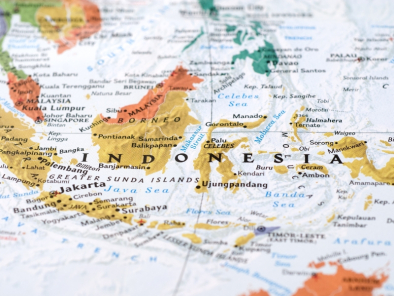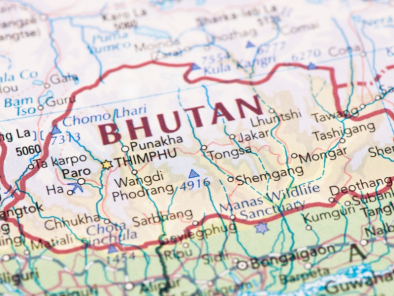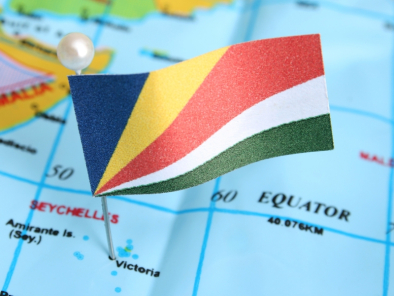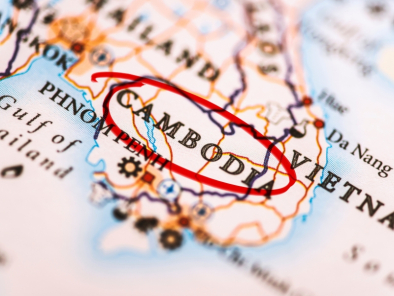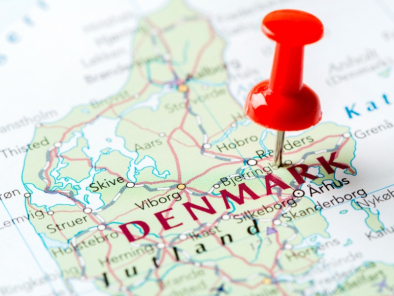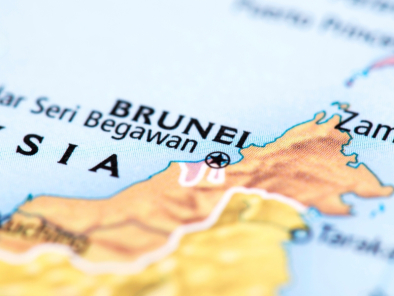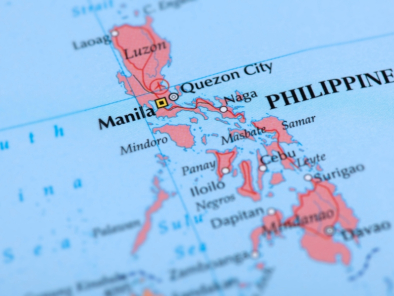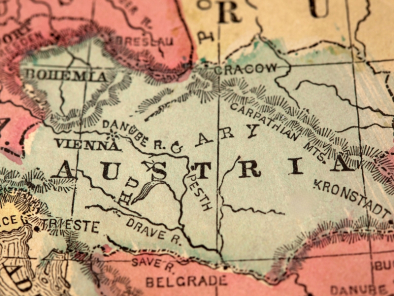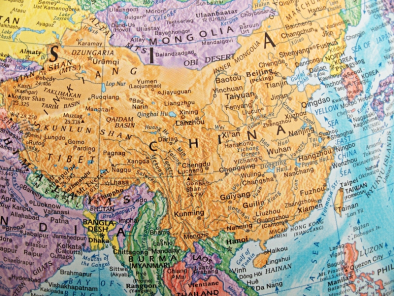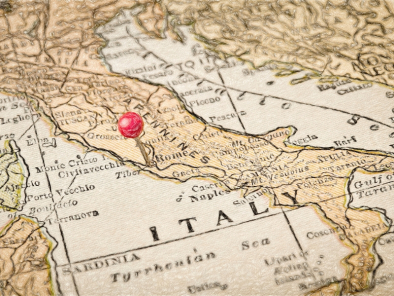
Posted by: Leo Travel Hub
ITALY
The ancient sun warmed land pulses with secrets
and messages from the rich and enigmatic past. In Italy
One peels back the century even as one explores a country wreathed in myth and legend. The nation has spawned intellectual giants in the fields of literature, art and science like Homer, Dante, Columbus, and Michelangelo. The-larger-than-life conquests of Julius Caesar, the magnificent Roman Empire, the creative outpourings of Renaissance… Italy has seen it all. The country morphed into a modern state in the 1800s and continues to be the seat of Christendom.
INFORMATIVE WEBSITES:
www.enit.it or http://www.lonelyplanet.com/maps/europe/italy/ or website of airports: http://en.wikipedia.org/wiki/Category:Airports_in_Italy
VISA The visa is to be obtained prior to arrival in the country
|
INTERNATIONAL AIRPORT: Rome |
Leonardo da Vinci |
26 km southwest of Rome city |
|
Venice |
Venice Marco Polo Airport |
07 kms north of Venice mainland |
|
Pisa |
Galileo Galilei International Airport |
97 kms west of Florence |
|
Florence |
Amerigo Vespucci Airport or Peretola |
05 kms northwest of town |
|
Milan |
Malpensa International Airport |
48 kms to Milan City centre |
|
Milan |
Milan Linate
International Airport |
07 kms from downtown |
|
Rome |
|
26 km southwest of Rome city |
|
Venice |
Venice Marco Polo Airport |
07 kms north of Venice mainland |
|
Pisa |
Galileo Galilei International Airport |
97 kms west of Florence |
|
Florence |
Amerigo Vespucci Airport or Peretola |
05 kms northwest of town |
|
Milan |
Malpensa International Airport |
48 kms to Milan City centre |
|
Milan |
Milan Linate
International Airport |
07 kms from downtown |
CURRENCY:
Euro is the official Italian currency. Euro banknotes and coins are in circulation in 12 EU countries including Italy. Exchange offices have business hours similar to those of stores. Banks are generally open from Monday to Friday from 8:30 to 1:30 pm and from 2:45 to 3:45 pm. Public shops accept all principal credit cards.
GETTING AROUND:
Getting
There
Air
: The main gateways to
Train
: Is the best mode of transport in and out of
Ferry
: Ferries connect the country with
Bus
:
Approx 3 hours is the journey time from one city to another: Rome to Florence is 3 hours, as well as Florence to Venice, Venice to Milan, Rome to Naples. In addition, the train sector ticket by Eurostar is almost the same from one city to another: around 30-35 Euro.
TIME:
Italy is 4 hours and 30 minutes behind India. (Subtract one hour for DST from March to October
CLOTHING:
Bring comfortable shoes, a sweater, clothes you can layer and an all-weather coat. There may be some occasions were formal dress is required. Some religious sites may require modest dress to enter (no shorts or sleeveless tops).
ELECTRICITY:
The voltage used is 220 volts.
DAILING CODE:
00 39
TIPS:
This is a matter of personal discretion. Tips are appreciated and expected for good service in restaurants and other places. Although restaurant bills often include a service charge, this amount is not typically for the waiters/staff. A typical tip is approximately 10%.
LANGUAGE:
Italian is the national language.
SHOPPING and MUST BUYS:
Shops are generally open from 9 a.m. to 1 p.m. and from 3:30 to 7:30 p.m., with some variations in Northern Italy, where the lunch break is shorter and shops close earlier. Prices are reasonable and the quality of goods is very high. Department stores such as La Rinascente, Coin, Upim, and Standa are found in many Italian cities and towns. Things to buy: Clothes for men & women (dresses, shoes, gloves, silk ties, shirts); lacework, jewelry, leather goods (handbags, cases, boxes, luggage), ceramics, gold and silver items, alabaster; woodwork, straw, embroidery, glass and crystal ware. It is advisable to carry merchandise purchased with you in order to avoid any inconvenience. All major credit cards are honored in Italy. A proof of purchase (receipt) must be kept.
CITIES: ROME
The eternal city is the seat of the papacy and the capital of the Christian world and combined with it’s more than 2000 years of history, exquisitely rich artistic and architectural patrimony of Rome can often leave a tourist feeling overwhelmed.
Getting There
Air
: International airport Leonardo da Vinci (Fiumicino) airport is 26km southwest of
the city. There are trains every 30mins
to the city center Roma Termini Station (40mins ride) . Rome’s other airport is
Ciampino, about 20km southeast of the city.
Train :. Rome’s main railway station is Termini Station.
Getting Around
Bus
: The city bus company is ATAC, and
most of the main buses terminate at the bus station outside Stazione Termini.
Metro
: Metro service (which is convenient
for many of
Termini Railways station is in the centre of Rome and many hotels are within walking distance. Therefore, if you are traveling by train you can stay in a nearby hotel. Fiumicino airport is 40 minutes drive from Rome centre. It’s always advisable to take a private transfer by car to reach the hotel. Instead for the transfer Station-Hotel, a taxi transfer will cost much less (around 10 euro) than a private one (around 45 euro). Sightseeing on SIC basis are always available all year and many have pick-up and drop from/to hotel. Vatican tour on SIC always includes guide and entrance ticket, which now is 13 euro.
MUST SEES:
Capitoline Hill:
Located: Piazza
del Campidoglio,
Of Rome's seven hills, the Capitoline Hill (Campidoglio) is the most sacred. The Capitoline Hill is where the city's first and holiest temples stood, including its most sacred, the Temple to Jupiter and the Capitoline Triad Today, Capitoline Hill is home to the Capitoline Museum, a world-class museum of Roman artifacts. Opening Hours: Tues-Sun 9am-8pm. Free on last Sun each month
Roman Forum (Foro Romano)
The ruins
The Colosseum
The Colosseum is probably the most famous landmark in Rome. Built in the 1st century AD, this great arena could seat 45,000 spectators and was the largest Roman amphitheater in the world. It hosted gladiatorial combats, spectacles with wild beasts and possibly the execution of early Christians. Throughout the Middle Ages, the Colosseum was believed to be a place of martyrdom and was therefore regarded as a sacred place. Opening Hours: Mon, Tues, Thurs, Fri, Sat 0900-two hours before sunset; Wed and Sun 0900-1300. Winter: daily 9am-4:30pm.Tip: Try to visit late in the evening or early in the morning to avoid the crowds arriving on tour buses.
Parthenon
The Pantheon is widely praised
for its feats of architecture and concept of space. At 43m (142 ft) wide and
43m (142 ft) high, it is a perfect sphere resting in a cylinder. The main altar of the church is
opposite the entrance, and the original 7th-century icon of the Madonna and
Child can be seen above it. This was previously dated to the 13th century, but
the 7th-century original was recently recovered under layers of over painting.
It is a rare survival of an icon from a period when they were a common feature
in Roman churches. Located Between the Tiber and Monte Quirinale in
The Spanish Steps (Piazza
di Spagna)
With its characteristic butterfly plan, the Piazza di Spagna
is one of the most
famous images in the world, as well as being one of the most
majestic urban monuments of Roman
Baroque style. It owes its name to the Spanish Embassy, the
first to be permanently established in
Trevi Fountain (Fontana di Trevi)
Italy’s most famous fountain was built in the back of Palazzo
Poli, to make the square appear larger and more sumptuous. Today it is regarded
as the most beautiful fountain in the world. A masterpiece of architecture and
sculpture, the Trevi Fountain dates back to ancient Rome. Rebuilt many times
throughout the millennia, it was completed by Nicola Salvi between 1732 and
1751. The Fountain is a symbolic and fanciful celebration of the Mediterranean
civilization.
The rushing water comes
from the Acqua Vergine aqueduct. The aqueduct transports the water from the
Salone springs, 19 miles away from the city. It is named after the young girl
(virgin) who supposedly took thirsty soldiers to its source. The name Trevi
literally means three ways: the fountain was constructed at the intersection of
three streets.Legend has it that throwing a coin into the Trevi fountain will
ensure your return to Rome. (It is important that you do so by turning away
from the fountain and tossing the coin over your shoulder.)
Around the fountain you find most picturesque streets, with beautiful churches, and also charming shops and restaurants. The most famous is Via delle Muratte, which begins with the quarters' old baker (Forno).
Basilica
of St. John Lateran
Dedicated to John the Baptist and John the Evangelist, the Basilica of St. John Lateran (Basilica
di San Giovanni in Laterano) is the first among the four major basilicas of
Rome, Founded 318 AD. It is also the
cathedral of the bishop of Rome, the Pope, and is thus known as:
"Cathedral of Rome and of the World." Built by Constantine the Great
in the 4th century, San Giovanni in Laterano was the first church to be built
in Rome. It contains several important relics, a lovely 13th-century cloister
and an ancient baptistery. The
Basilica of San Giovanni in Laterano is guardian to a host of cultural,
historic, architectural and artistic treasures. Contained in its complex are
Rome's largest Cloister and the 4th century octagonal Baptistery, the first
constructed in Rome. Also in the complex is the church of San Lorenzo,
containing the Sancta Sanctorum (the private Chapel of the Popes), and the
Scala Santa or Holy Staircase. The Holy Staircase was walked on by Jesus on his
way to trial by Pontius Pilate and brought from Jerusalem in the 4th century by
Emperor Constantine’s mother, St. Helena.
Opening Hours: Summer daily
7am-6:45pm (off season closes to 6pm) Location Piazza San Giovanni in
Laterano 4. To get there by Metro:
San Giovanni and Bus 4, 16, 30, 85, 87, or 174
Castel Sant'Angelo
With its unmistakable cylindrical contour and particularly scenic position along the shore of the Tiber River, Castel Sant'Angelo is one of the town's most famous landmarks. Indeed, we must try and imagine an enormous cylinder positioned on a square plan, with a garden top covered with tuff, travertine and copious trees. The popes also commissioned the construction of a covered fortified corridor connected to the Vatican Palaces, which was to be used in the event of danger as an extreme escape route. Castel Sant'Angelo also guarded the riches of the popes: the treasury room in the centre of the fort was a kind of safe for Rome during the Renaissance. The castle was also used to store enormous reserves of food, which were to be used in the event of an attack. There were wineskins set in the walls, enormous water tanks, granaries and even a mill. Today it is visited by tourists from all over the world and is home to the National Museum of Castel Sant'Angelo. There are collections of weapons and documents about the history of the castle. All rooms can be visited, from the jail to the pope's apartments and all the numerous fully adorned rooms.A very dear landmark of the town is the statue of Archangel St. Michael, high up on the enormous terrace, from which the castle takes its name. It was created in memory of an ancient legend that speaks of the terrible plague that struck Rome in 590 AD, which ended thanks to the apparition of an angel that appeared above the castle and conceded grace to the town when he sheathed his sword.
Museo e Galleria Borghese:
The original sculptures and paintings
in the Borghese Gallery date back to Cardinal Scipione's collection, the son of
Ortensia Borghese - Paolo V's sister - and of Francesco Caffarelli, though
subsequent events over the next three centuries entailing both losses and
acquisition have left their mark. Exhibition dates: from 18th October 2007 to
3rd February 2008. Opening hours: daily from 9.00 a.m to 7.00 p.m., closed
Monday.
Location: GEBART SRL
Via Prenestina, 685
00155 Roma
Official website- www.galleriaborghese.it/borghese/en/edefault.htm
The Sistine Chapel & Vatican Museums (Cappella Sistina & Musei Vaticani)
Explore the world's
smallest country, its largest church and an impressive collection of fine art.
The Vatican is one of the most interesting and breathtakingly beautiful sites
in the world. In 1508, Michelangelo was commissioned by Pope Julius II della
Rovere to repaint the ceiling of the Sistine Chapel. This is where you can see
on of his most well known frescoes, the Last Judgement. This fresco covers the
entire end wall of the chapel, and is one of the highlights for visitors to the
Sistine Chapel. It has a history full of dark tales of deceit and even lust! A
world of discovery awaits you.An awe-inspiring glimpse of Michaelangelo’s
depiction of The Creation is worth the queues and crowds that go hand-in-hand
with a visit to the Vatican City. The swirling Old Testament scenes have been
recently restored, amid great controversy. Michaelangelo grudgingly accepted
Julius II’s commission to paint frescoes on the ceiling of the Sistine Chapel –
built as a private chapel of the popes between 1475 and 1480. Work began in May
1508, the frescoes were unveiled in August 1511, and completed in October 1512.
21 years later, a reluctant Michaelangelo painted the Last Judgement on the
wall behind the altar, adding his own aged face below the figure of Christ.
Pope Pius IV was scandalised by the display of nudity and the offending
genitalia had to be concealed by hastily painted loincloths (most have been
removed during restoration work). Although eclipsed by Michaelangelo’s
artistry, the Renaissance paintings that line the walls are fine works, created
by the masters – including Michaelangelo’s own teacher: Ghirlandaio.
The Vatican
Museums alone could easily take up a day or two of a trip to Rome. Highlights
include the Raphaele Stanze (Raphael Rooms), the Etruscan Museum – depicting
Italy before the Romans – and the Pio-Clementino Museum – containing the
world’s largest collection of Classical statues.
Viale Vaticano
Website: www.vatican.va
Transport: Metro Ottaviano; bus to Piazza del Risorgimento.
Opening hours: Mon-Fri 0845-1530, Sat 0845-1230.
The Pincian hill lies to the north of Quirinal,
overlooking the Campus Martius. It was outside the original boundaries of the
ancient city of Rome, and was not the one of the Seven Hill of Rome, but it
lies within the wall built by Roman Emperor Aurelian between 270 and 273. Casina Valadier, a
magnificently decorated templelike Neoclassic building perennially due for
renovation and reopening as a restaurant.
Location Parks, Squares, Villa Borghese
St Peter’s Basilica (Basilica di San Pietro
St. Peter's Basilica
(Italian San Pietro in Vaticano)
is a major basilica in Vatican City, an enclave of Rome. St. Peter's was until
recently the largest church ever built (it covers an area of 23,000 m² and has
a capacity of over 60,000), and it remains one of the holiest sites in
Christendom. Whoever arrives in Saint Peter's Square feels immediately welcomed
by a spiritual embrace. The Basilica of Saint Peter (Latin: Basilica Sancti Petri), officially known in Italian
as the Basilica di San Pietro in
Vaticano and commonly called Saint
Peter's Basilica, is one of four major basilicas
of Rome.
It is the most prominent building inside the Vatican City
and built on the ruins of Old Saint Peter's Basilica. Its dome is also a dominant feature of the
Roman skyline. Optional extras include a trip (via lift or stairs) into the
dome, the Vatican Gardens (tours are organised by the Vatican Tourist Office),
and the Vatican Grottoes, containing papal tombs. Access to the Necropolis
below the Grottoes – the legendary site of St Peter’s remains – is allowed with
written permission only. Tel: (06) 6988 4466. Fax: (06) 6988 5100.
Website: www.christusrex.org
Transport: Metro Ottaviano; bus to Piazza del Risorgimento.
Opening hours: Daily 0700-1900 (Apr-Sep); daily 0700-1800 (Oct-Mar).
St Peter’s Dome
Opening hours: Daily Oct-Mar 0800-1700; Apr-Sep 0800-1800.
Necropolis
Opening hours: Applications should be made to the Uffizio degli Scavi several
days prior to visit.
Vatican Gardens:
Tel: (06) 6988 4466 (Vatican Tourist Office)
Just
like the opera house, it was restored a few years ago and reopened in 2004 with
a new display. Besides being a meeting place for the general public, the Museum
is a point of reference for opera enthusiasts and for scholars, thanks also to
the Simoni Library, located in the Palazzo Busca (on Magenta Avenue), which has
collection of more than 120,000 books. It also provides musical training for
the new generations. The museum regularly hosts temporary exhibition.
Lake Como
Lake Como is 25 miles north of Milan and 388 miles north of Rome. The train to Varenna is the quickest Milan connection to any mid-lake point. Trains run between Milan Centrale train station and Varenna every two hours. The Milan train schedules list Sondrio and Lecco, but not Varenna. Since Varenna is a small stop, you must ask directions so you don’t miss it. Villa Carlotta is one of the best of Lake Como’s famous landmarks
Bergamo 45 km form Milan. Elegant walled hilltop university town. Regular trains (from Centrale, Porta Garibaldi and Lambrate stations, about 1 hour trip time) and buses.
Lake
Garda
Lake Garda is roughly halfway between Venice and Milan with a lot of
beautiful small cities, the best is Sirmione. Two big theme parks are nearby: Gardaland, This park has more
than 40 different rides and waterslides, making it
VENICE
City of canals and palaces… Venic’s nature is dual: water and land, long history, For thousands of years the city was one of the most enduring mercantile sea powers on the face of the earth. Today the brilliance and the influence have long since faded, leaving a town of tarnished glories, out of time and out of place, so beautiful it’s hard not to look for the back of the set.
Getting
There
Air
: Flights land at the Aeroporto Marco
Polo, 7km north of the city on the mainland. The special ATVO airport shuttle
bus connects with Piazzale Roma not far from Venice’s Santa Lucia train station
in about 20 minutes.
Train : Trains from
Ferry : The most fashionable and traditional way to arrive
in Piazza San Marco is by sea.
the Cooperative San Marco/ Alilaguna operates a large
shuttle boat service from the airport with two stops at Murano and the
Getting
Around:
Walking in Venice can be a rewarding pursuit.
Vaporetto (water bus) is the quintessential method of
getting around Venice.
The classic gondola ride with the opera-warbling operator
is pretty touristy.
Regular buses run from Piazzale Roma to Mestre and other mainland destinations, but it’s probably the least exciting way to get around.
In
Venice there are 2 main localities: one is Venice
Island and one is Venice-Mestre.
Venice Island is the main place to be visited. Venice-Mestre is a town near
Venice (around 20 minutes) where many hotels are, but on the mainland not on
the island. A bridge connects Mestre with Venice Island. From Mestre are
available regular bus, or taxi or private transfers which takes you to the port
from where there are regular ferry transfers (Vaporetto) which takes you to St. Marc
Square or on others islands of Venice.
Staying in Venice Island is better, since you are already near all the main attractions but it’s always more expensive and hotels many times are fully booked and with exorbitant prices. Therefore for budget clients is always advisable to stay in Venice-Mestre, cheaper and not far from the Island. All regular sightseeing starts from St. Marc Square. In Venice Island there are no cars, so all transfers will be by private boat or ferry. Railway station is in Mestre but also on the Island (Santa Lucia Station). In Venice Island there are no Indian Restaurants, you can find them only in Venice-Mestre.
Attractions:
The
Grand Canal (Canalazzo)
Venice's main waterway splits the city in half with sestieri in equal parts to the west and east of it. It is the hub around which much activity in Venice is concentrated and is encircled with elegant facades of the palazzi, which testify to the city's past opulence. The best way to explore the architectural splendour of these Renaissance buildings is on board a vaporetta. Pedestrian access across the canal is only provided along bridges situated at the station, Rialto and Academia. Gondolas cross the canal at regular intervals and provide a romantic interlude to the sightseeing itinerary.
St Mark’s Square
The St. Mark's Square (Piazza San Marco), which was called "the drawing room of the world" by Musset, has been the centre of the religious and social life in the Venetian republic for almost one millennium.
Rialto
The Rialto bridge has long been the commercial core of Venice and is famed as the place where the first bridge over
Academia
The
Gallerie dell'Academia houses one of Europe's finest art collections.
Address: Dorsoduro
1055;
Website: www.gallerieaccademia.org; Opening
time:
Tuesday to Sunday 8.15am to 7.15pm, Monday 8.15am to 2pm.
Doge’s Palace
The Doge's Palace is a gothic palace in Venice. Located on the eastern end of St. Mark's Square right next to St. Mark's Church, the Doge's Palace is a beautiful Gothic building that used to be the home of the Venetian doges. Today, the building it open to visitors on most days. Inside the palace, visitors can view the Great Council Hall, the Chamber of the Council of Ten, the torture chamber, prison cells and other rooms. The famous Bridge of Sighs connects the Doge's Palace with the state prison.
Excursions
Murano & Its Glass
The island of Murano has long bveen famous throughout the
world for thr products of its glass factory. A visit to the
Location: 8 Fondamenta Giustinian 30141, Italy.To get to the “glass island” you must go to Fondamenta Nuove where you can take a motor boat nos 41 or 42 that reaches the glass island in about 10 minutes.
Burano
& Its Lace
Burano can be
reached from the Fondamenta Nuove or from the Murano Faro stop, taking the LN
line.
Burano is one of the prettiest islands in the lagoon: it is a miniature Venice
where all the houses are painted in bright colors. Burano is famous for its
lace work, an art carried out since the sixteenth century and which is famous
worldwide.
Torcello
It is possible to
reach the
Torcello is an extremely romantic and charming place. Venetians love to go
there once in a while as they are attracted by its calm and the greenness of
the island. Unlike Murano and Burano, Torcello is practically uninhabited and
still has a lot of archeological proof of its glorious past.
Padova
About 35 km west of Venice, Padua is a thriving town, singled out by her ancient university and the home of Giotto’s ground frescoes. The basilica of San Antonio echoes the Byzantine influence of St. Mark’s. But the most popular attractions is The Scrovegni chapel. Padua is just 20 min. by train west from Venice.
Verona
Julliet’s Balcony
About
100 km west of
FLORENCE
Air :
The closest major international airport is Pisa’s Galileo
Galilei Airport 97km west of Florence.
Two to three trains per hour leave the airport for Florence (70-100 min).
Train :
Getting
Around
Buses leave from a variety of terminals scattered about the main train station, Stazione di Santa Maria Novella
Florence is a small city. Staying near the station (SMN Santa Maria Novella) means to be a very short distance from the main attractions.
The Uffizi (Gallerie degli Uffizi)
The Galleria degli Uffizi is the most visited (over 1.5 million people a year, closely followed by Michelangelo's David) tourist attraction in Florence, and is home to the finest collection of paintings and pictures in Italy - it is undoubtedly one of the finest museums in the world. Uffizi Gallery is closed on Mondays. Other than that its open on Tuesday to Sunday from 8.15 AM to 6.50 PM.
The Accademia Gallery
Michelangelo’s
David stands self assured above the crowds that flock around to admire him. In
the hallway leading up to the famous sculpture .In the heart of the city, it
hosts the examples of paintings and sculptures by the great masters of the
Florentine 14th and 15th centuries who have made Florence the capital of art.
Opening: Tuesday to Friday from 8.15 to 18.50
Closure: Monday, December 25th and January 1st
Cathedral Square
Santa Maria del Fiore, the duomo or Cathedral of Florence is set in the heart of the city and perches above the metropolis. Its most distinctive features is the enormous dome. Visitors can climb between the two shells of the cupola for an unrivalled panorama of the city. The Campanile (bell tower) was built according to Giotto’s design in 1334 and is an elegant prop to Brunelleschi stout Cathedral. The neighbouring Baptistery is with its famous doors is one of Florence’s oldest buildings and was originally a pagan temple.
The Bargello
This
Gothic Palazzo shelters a treasured national collection of Renaissance
sculpture.
Open
Tuesday through Saturday 8:15 a.m. to 1:50 p.m. Also open (same times) first,
third, and fifth Monday of month and second and fourth Sunday.
Location:
4 Via del Proconsolo,
Sante Croce
The Basilica di Santa Croce (Basilica of the Holy Cross) is the principal Franciscan church of Florence, Italy. Situated on the Piazza Santa Croce to the east of the Duomo, it is best known for its Florentine artwork and its tombs of illustrious dead, including Michelangelo, Galileo and Machiavelli. Address- Piazza Santa Croce 16, Florence, Italy opening hours: Mon-Sat 9:30am-5:30pm; Sun 1-5:30pm
Ponte Vecchio
The
Ponte Vecchio ‘s status as the oldest bridge in
Excursions:
Fiesole
Sooner
or later everbody needs a break from Florence. Visitors n search of those ‘cool
uplands’ should head for the lush olive groves and
Siena
Located 50 km south of Florence, medieval Siena is often seen as the female counterfoil to Renaissance Florence. At her heart lies the magnificent shell like piazza, II Campo. Must sees include the humbug striped cathedral and the majestic Palazzo Pubblico (town Hall) No visit is complete without a wander through Siena’s cool, warren-like streets that wind around II campo. From Florence, Siena is best reached by Bus. Coaches depart from the station on Via Santa Caterina (journey around 1 hr)
Leaning Tower of Pisa
45 min
from
San Gimignano
Distances: Siena 36 Km - Florence 50 Km – Pisa is a small walled medieval hill town in Tuscany, Italy, about a 35-minute drive northwest of Siena or southwest of Florence. It is mainly famous for its medieval architecture, especially its towers, which may be seen from several miles outside the town. The town is known for the white wine grown in the area
Sicily
The
island of Sicily is a place of contrasts from the crumbling grandeur of its
capital, Palermo to the Greek ruins at the Syracuse, volatile Mt. Etna and the
Aeolian Islands. It’s the largest island in Italy leaving a historical detritus
that includes Greek temples, Roman ruins churches and castles, Arab domes.
In
Eastern Sicily lies the
Erruptions
occur frequently, & visitors should be aware that the excursions are at the
mercy of volcanic activity. People are no longer allowed to climb the craters.
The volcano’s and its slop has been a
part of the national park with alpine forest.
Naples
can be easily reached by very efficient road and train network that connects the
city with the rest of Italy.

